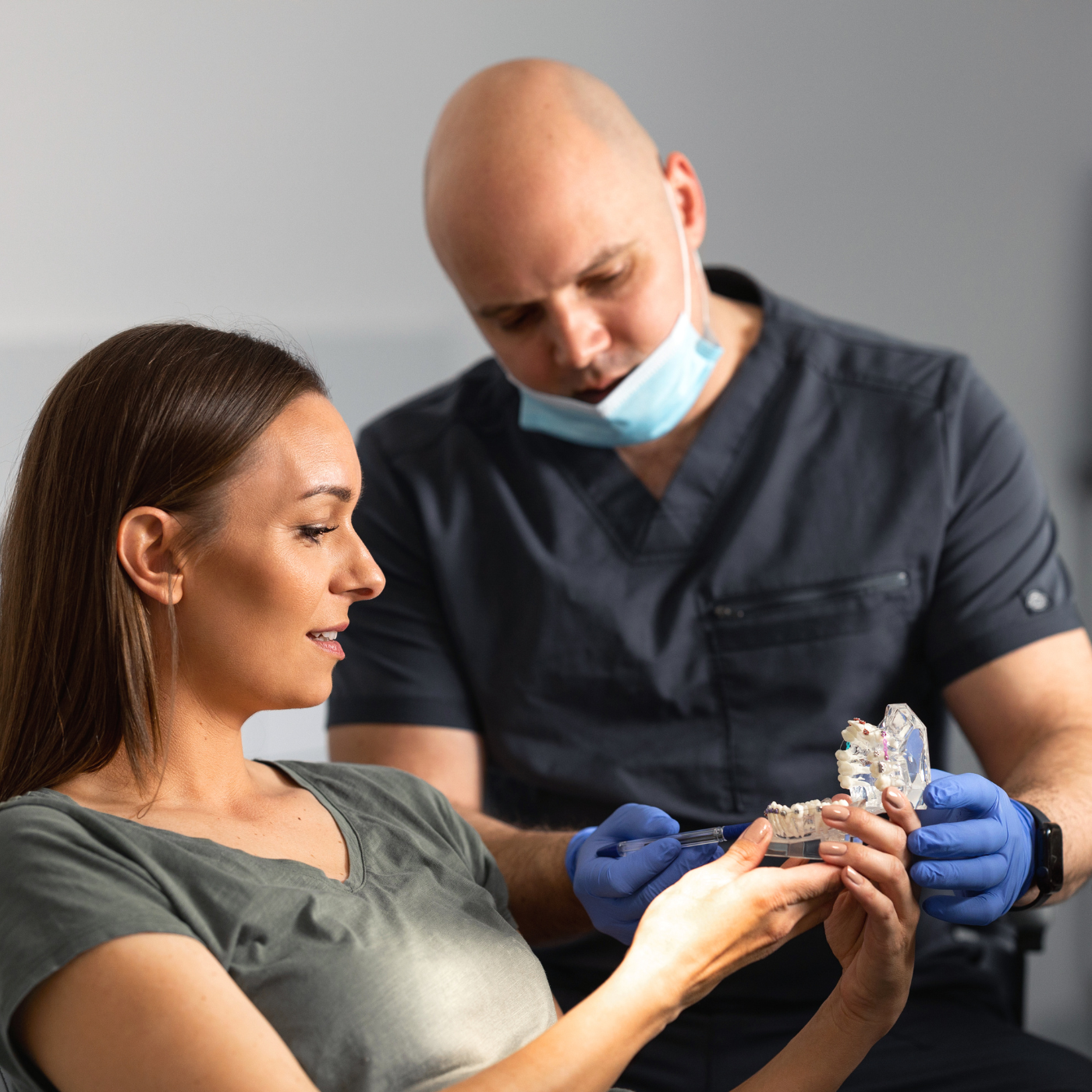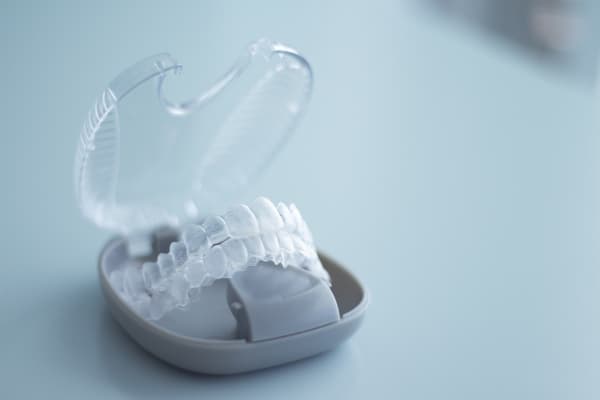
Orthodontics for Adults
Braces aren’t just for kids! Today, more than 25% of all orthodontic patients are adults — more specifically, they’re people who, for various reasons, did not have braces when they were teenagers. With the promise of better-looking braces, fewer appointments, less discomfort, and shorter treatment time, more and more adults are deciding that they want to improve their appearance, tooth function, and confidence.
We treat many adults — from patients requiring only minor tooth movement to major surgical cases with dentofacial deformities. Because adult jaws are no longer growing significantly, treatment is approached differently than with children.
Our orthodontists carefully devise adult treatment plans after discussing with patients their different options based on their main concerns. Adult patients are given a chance to become involved in their treatment plan after they are properly informed of their options. We offer Invisalign for those adults who want straight teeth and are opposed to wearing traditional metal braces.
Orthodontics for Children and Adolescents
The American Association of Orthodontists recommends that children be seen by the orthodontist at age seven. However, there is an ideal time to start with each child who is suffering from an orthodontic problem. This time is not necessarily based on age, but rather on growth and stage of development. We try to avoid extracting permanent teeth unless absolutely necessary to gain enough room to straighten the teeth. Many children do not need to start braces until most or all of their permanent teeth come in — between 11 and 13 years old – but the sooner you can bring them in, the sooner we can find the optimal age to begin treatment for your child.
Some children with certain malocclusions will require a first stage of orthodontic treatment for about a year at an earlier age — 7 to 9 years old — and then a second stage after all their permanent teeth come in. A small percentage of children with severe malocclusions require starting early treatment and leaving the braces on until all the permanent teeth come in.
Whatever age your child begins treatment at, we will ensure a comfortable and convenient experience!
Advantages of Early Treatment
- Moves the front teeth back so they will be less susceptible to injury.
- Improves the relationship of upper and lower jaws, allowing more normal future development.
- Uses maximum advantage of growth for successful treatment.
- Improves facial appearance and self-esteem.
- Takes advantages of the good cooperation of patients at this age.
- May reduce or even avoid the need for further treatment when patients are older.
Frequently Asked Questions About Orthodontics
When Is the Best Time to Begin Early Treatment?
A good time for a first orthodontic appointment is when your child is around the age of seven.
Orthodontic treatment can be begun concerning certain types of tooth problems before all the permanent teeth have erupted.
What Are Advantages of Early Treatment?
Early treatment...
- Moves the front teeth back so that they will be less susceptible to injury
- Improves the relationship of the upper and lower jaws, allowing more normal future development
- Uses maximum advantage of growth for successful treatment
- Improves facial appearance and self-esteem
- Takes advantage of the good cooperation of patients at this age
- May avoid or reduce the need for further treatment when patients are older
What are the phases of early treatment?
First Phase:
Treatment usually takes 12 to 18 months. A variety of appliances may be used to correct specific problems.
- Braces - Placed on the upper and sometimes lower permanent teeth
- Headgear - Worn to move the upper teeth back
- Rapid Palatal Expander - Worn to widen the upper jaw
- Face Mask - Worn to move the upper jaw forward
- Functional Appliance - A removable "retainer" worn to stimulate jaw growth
Maintenance Phase:
During the time between the first and second phase, the patient will be seen approximately two times per year.
Second Phase:
During the first phase, the orthodontist has no control over 16 unerupted permanent teeth. If after they grow in, problems still exist, further treatment will be required. A separate fee will be quoted at that time. Treatment usually takes 12 to 24 months at age 12 to 13.
What our patients say





